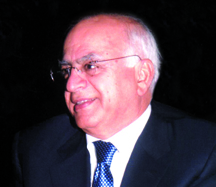Failaka & migration of Persians
the political and social movement in kuwait has been active since the 1920s and the pace of this movement increased in the 1950s with the presence of literary, political and sports clubs and associations before a decision was taken later to shut them down.
one of the institutions was the guidance society, which later became the reform society, the brotherhood’s mouthpiece, and the national cultural club, which advocated progress and had arab national aspirations.
the national cultural club then issued the al-iman (faith) magazine edited by ahmad al-saqqaf, dr ahmad al-khatib, yousif ibrahim al-ghanem and yousef al-mashari, before they were joined by abdul razzaq al-busir and abdullah yousif al-ghanim.
the edition was sold for 6 indian rupees then equivalent of 450 kuwaiti fi ls, a high price for a modest publication. the date of its arrival from beirut was unknown, so the fourth issue was the date nissan 1953 (hebrew calendar), not april. in this issue, the following article is published under the title ‘failaka and the migration of the persians’.
“the danger of migration of the persians to kuwait did not end easily, and the methods used by these intruders to infi ltrate into the country were varied and many, including what we have heard recently, that they come in small boats which land on the failaka island. they live on the island for some time and then infi ltrate into kuwait with the help of fi shermen who smuggle them into kuwait and accommodate them in the shops or homes of their compatriots.”
offi cials must be cautious about the threat posed to this arab country and the coast guard has a special role to play by adopting stringent measures to combat the infi ltration because it threatens the security, health, morals, national identity and the very future of the country.
if we take a look at the names of editors of the publication we will discover they are nationalists who were hostile to the brotherhood and those who were concerned about the demographic danger coming from iran at that time.
i do not think that a majority of them embraced the same ideas after decades after they saw the truth of the danger that threatens the nation and its full moral existence and civil nature, which still continues.
i can say that a majority of those who came to kuwait from the desert of persia in the 1950s were non-iranian shiites, who were merged within the society in a smooth way. the rest whose migration was warned of in the publication were other shiites, but they were skilled people and originally came from the iranian cities relatively far away from the desert.
they were skilled builders, carpenters, blacksmiths and others, and they, almost all of them, returned to their homeland after saving some money. there is no doubt that they entered kuwait illegally at that time, and those who remained had entered legally and did not demand nationality or otherwise.
if we look at the demographic structure today, we will fi nd it strange. the number of kuwaitis (the original citizens, if we can say), who were registered by an offi cial naturalization committee in 1962, was less than 170,000, and if we take the highest rate in the world for the increase of the population, we fi nd that the number today should not exceed 700,000, but the reality is that the number is one-millionand-a-half.
this means the number of those who were naturalized for political and electoral reasons after the closure of naturalization in 1962 exceeds the logical number, and here is the real source of danger politically and culturally to the entity of the state and as a result came our warning of the danger of granting citizenship under the naturalization act of 4,000 on the basis of electoral or political interests.
on the other hand, late yahya al-hadidi was the fi rst doctor to be granted the kuwaiti nationality, his son sabah became a doctor, his grandson also followed in the footsteps of yahya.
the al-hadidi family is the only one with three successive generations of doctors, with love and respect for all of them. here is the difference in the quality of naturalization we demand.






